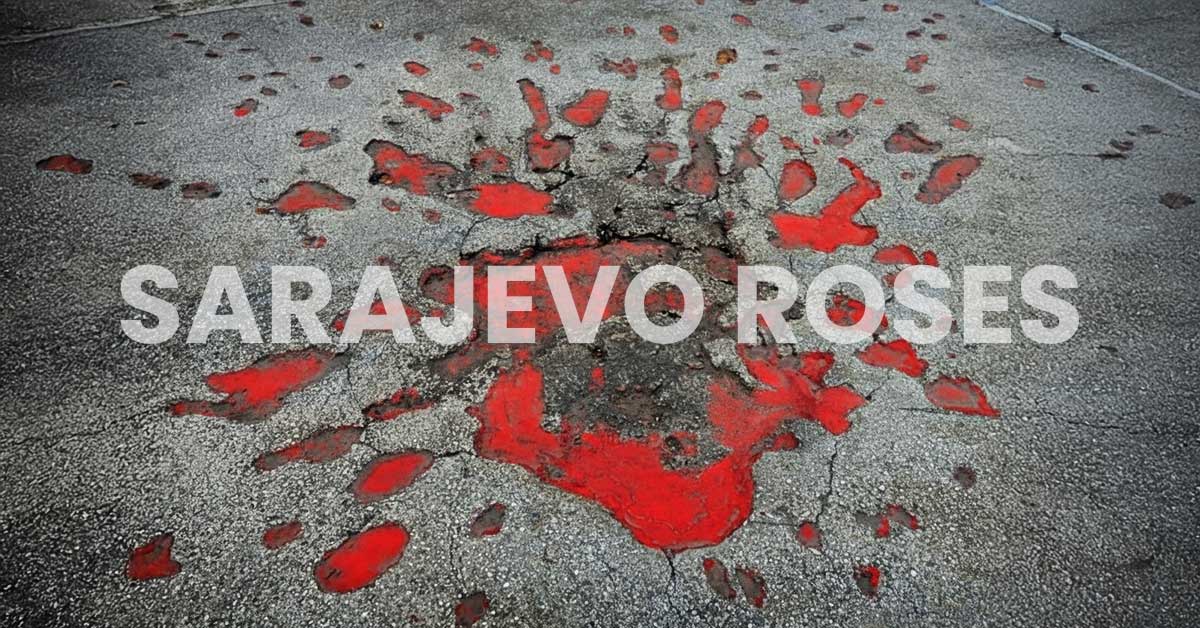Sarajevo has memorials you can see from afar—and ones you walk over. Sarajevo roses belong to the second kind: mortar-shell craters from the siege (1992–1996) that Sarajevans filled with red resin after the war. The burst pattern in concrete resembles a flower—hence the name, both bitter and accurate. Today the city has around 200 such places recorded; authorities officially mark locations where a single explosion killed at least three people.
Table of Contents
What exactly are Sarajevo roses (and why they look like a flower)
During the siege thousands of mortar shells struck the city; impacts in asphalt and concrete left a characteristic ringed pattern of fragments. After the war, some of those scars were filled with red resin—a small, permanent street-level ritual of remembrance. Because of the shape, locals began calling them Sarajevo roses. This kind of memorial became a brief but precise lesson from a city that chose not to forget, but to remember while moving: each rose is a coordinate of one explosion and real lives.
Who started the Sarajevo roses idea and how it became official
The first Sarajevo roses were a spontaneous, civic gesture: neighbors, activists, and municipal workers marked cratered pavements with red resin/paint right after the war so that death sites wouldn’t vanish into routine. Over time the practice was standardized: cantonal/city services and cultural institutions adopted the criterion that a rose officially marks a spot where ≥3 people died in one blast. Street memory thus entered official memory culture—roses are now part of school lessons, tourist maps, and public commemorations.
The most notable Sarajevo roses: where to see them easily
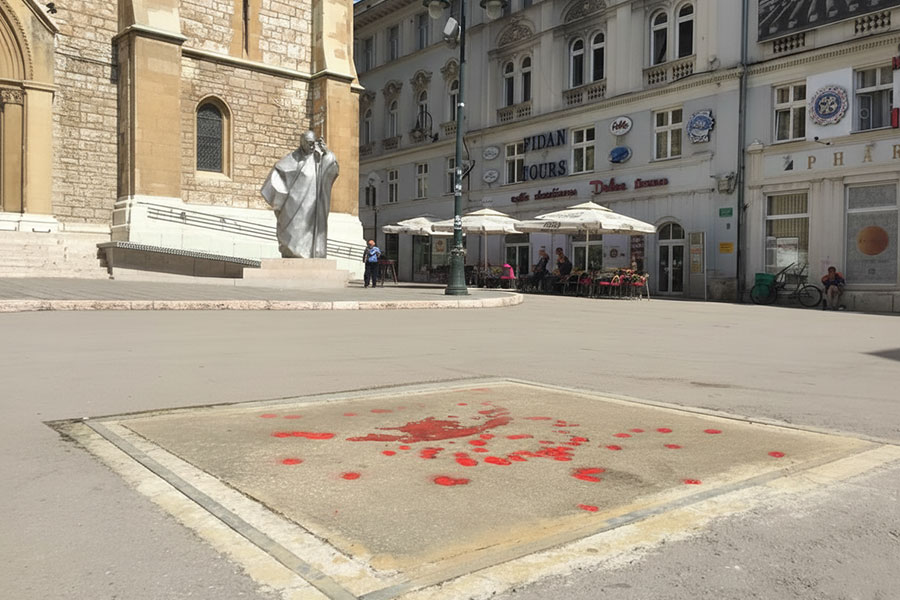
If you’re short on time and want to grasp the symbol, these spots are the most accessible and striking:
- Markale market: several roses around the marketplace; annual commemorations are held here and it’s likely the most visited site. Spend a few minutes and read the plaque—context matters.
- In front of Sacred Heart Cathedral (Ferhadija): a rose on the square most visitors notice while walking the pedestrian zone—ideal for a first explanation of the term “rose.”
- Veliki Park (memorial to the children killed during the siege): roses appear near the children’s monument—they clarify each other’s context; a powerful, educational pairing.
- Along “Sniper Alley” (Zmaja od Bosne → Maršala Tita): the highest density of scars; several roses sit by the tram line and major junctions.
- Skenderija/Parliament area: fewer in number but heavy in meaning due to the former line of risk and proximity to key institutions.
Read each location quietly: a rose is a small but precise unit of pain in space.
Maps and routes for Sarajevo roses: how to plan a visit
There isn’t one “perfect” map. A solid rule is: follow main pedestrian flows where everyday life meets memory. A practical 60–90 minute mini-route is: Eternal Flame → rose in front of the Cathedral → Markale (linger) → along Titova to Veliki Park (children’s memorial and nearby plaques). With more time, continue along Zmaja od Bosne toward Parliament/Skenderija to deepen your sense of the geography of the siege. For groups, plan short pauses (2–3 minutes of silence) at each stop.
Restoration and protection of Sarajevo roses: when a rose disappears (and how to help)
Sidewalk and road repairs sometimes cover roses; others fade over time. The city/canton periodically undertake restorations, and residents often refresh the resin on “their” rose. If you notice damage or disappearance, notify the relevant municipal/utility service or a local tourist/cultural info center—they route requests to the right office. Your on-site contribution is simple and important: don’t step on the red resin, don’t sit on the “flower,” don’t move candles/flowers; a rose is a small place of loss, not decor.
How to tell original Sarajevo roses from random damage
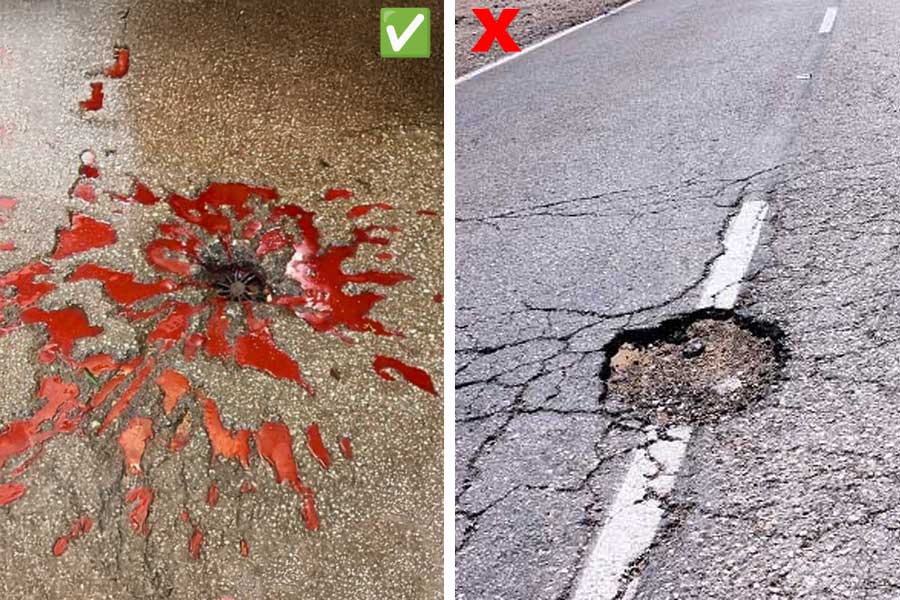
Original roses show a burst, circular ring of fragments and are filled with red resin (not spray paint). Ordinary damage is irregular, lacks a consistent ring, and has no memorial treatment. If you see a circular “starburst” with red infill—often with a candle or flower nearby—you’re almost certainly looking at a Sarajevo rose. Another clue: many roses have a plaque or inscription close by.
Sarajevo roses and “Sniper Alley”: reading the geography of the siege
Clusters along Zmaja od Bosne → Maršala Tita trace the main urban artery under fire. Viewing roses between Marijin Dvor – Skenderija – the city center gives you an intuitive map of where people moved daily under risk. Look around too: long straight avenues, little cover, high ground overlooking the roadway—space speaks almost as clearly as plaques do.
Season and light: why Sarajevo roses look different in rain and snow
Rain sharpens crater edges and creates reflections; snow makes roses warm islands of color on white; summer noon light can flatten the red resin. For the clearest image (and impression) choose morning or golden hour and stand at an angle so both edges and surroundings are visible. If it’s raining, don’t run—the water “rewrites” the pattern with light and the photo becomes stronger.
For researchers and journalists: ethics and verifying Sarajevo roses locations
Record the exact address or a precise landmark (building number, intersection), avoid sensationalism, and quote witnesses accurately. Always include context in publications: visit date, cluster (Markale/Cathedral/Veliki Park), and a note that this is a memorial at a death site. When collecting testimonies, respect family privacy and don’t publish personal details without consent.
Art and Sarajevo roses: how they became a motif
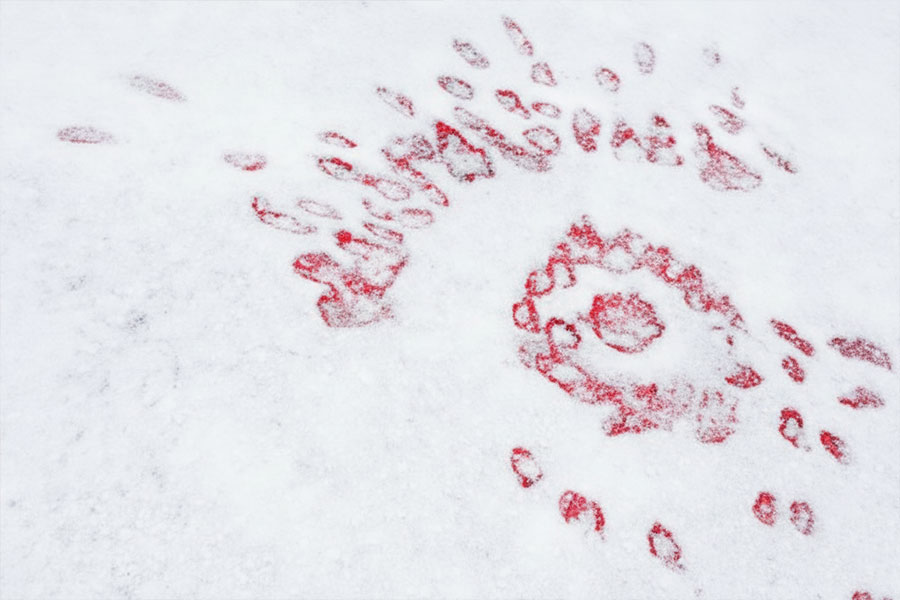
Photographers capture them as quiet cityscapes, writers use them as a metaphor for a city that remembers on the move, and curators connect them to exhibitions on the siege and urban memory. For an educational program, pair a roses walk with visits to the War Childhood Museum, City Hall, or the History Museum—a curve from personal memory to collective archive.
Community care: who looks after Sarajevo roses when they fade
Beyond city and cantonal services, schools, neighbors, and associations often refresh resin or report damage—small but meaningful rituals of care. To help, join local clean-up or marking actions, or at least respect the basic rule: don’t walk across the rose and let candles/flowers remain where they are.
Accessibility: Sarajevo roses without barriers
The main routes (Ferhadija, Titova, Markale, Veliki Park) are flat and accessible for wheelchair users and parents with strollers. For visitors with visual impairments, guides should use tactile descriptions: “a raised, circular scar in the pavement with red infill.” With bigger groups, move along the edge and plan short stops so you don’t block foot traffic.
Language and naming: why “Sarajevo roses,” not just “roses”
The term Sarajevo roses is standard locally and internationally because it clearly ties place (Sarajevo) to the metaphor (rose). In Bosnian it’s common to introduce the English term in italics or quotes the first time, then use Sarajevo roses on its own. That avoids confusion with ordinary flowers and preserves the term’s specific meaning.
Parallels worldwide: where Sarajevo roses sit on the memory map
Like Germany’s Stolpersteine (“stumbling stones”) for Holocaust victims or the bullet-scarred walls of Beirut that testify to war, Sarajevo roses are street markers of loss. The difference is their precision: each rose marks one explosion and specific lives at that spot, making the experience intensely local and personal.
Practical visit tips: what to bring and how to move
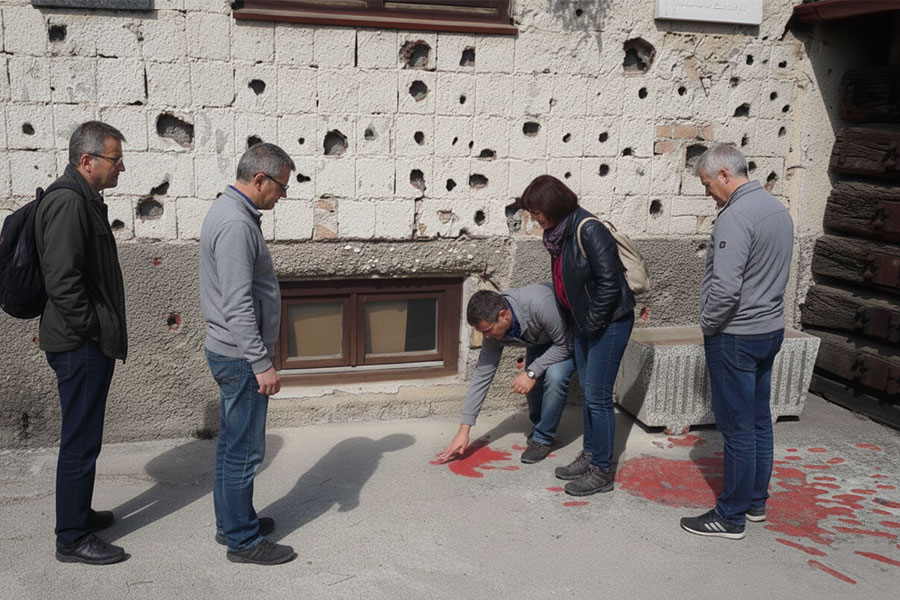
Bring water, comfortable shoes, and a raincoat/umbrella in wet seasons. Walk along the curb and avoid standing in traffic—many roses are near busy streets. If you plan multiple stops, allow 60–90 minutes of easy walking and take a break in Veliki Park. For children and seniors, include short rests and explain in advance that these are sensitive places.
How to report a damaged/missing Sarajevo rose
Photograph a wide frame (showing street and building number) plus a detail of the rose, note landmarks, and report it to the municipal/utility office or a tourist info center. If you know a brief historical note (e.g., “rose by the Markale market entrance”), include it—the clearer the report, the faster and more accurate the response.
“Three within five minutes”: quick central clusters
If you’re on a short stroll:
- Cathedral → the rose on the square in front (a very readable first lesson).
- Markale → several roses + the context of the massacres (a moment of silence is due).
- Veliki Park → the children’s memorial + nearby roses (rounds out the story).
This is the fastest lesson: three places, three shades of remembrance—and a clear picture of why Sarajevo roses matter.
Frequently asked questions about Sarajevo roses
How many “Sarajevo roses” are there?
Roughly 200, though the number changes with repairs, new findings, and occasional restorations.
Who decides where a rose is marked?
Common stops include roses at Markale, in front of the Cathedral, and around Veliki Park; along “Sniper Alley” you’ll find multiple smaller traces in sequence.
Do “Sarajevo roses” disappear?
Some are over-asphalted or damaged; there are restoration programs and civic initiatives bringing them back onto the map. Report losses when you see them.
Our Most Popular Tours To Sarajevo
We offer many tours that include a visit to Sarajevo and its most popular locations:
- Sarajevo Siege Tour & War Tunnel 1992 / 1996 (Most Popular)
- Full Day tour from Sarajevo to Međugorije & Mostar
- Full Day Tour from Sarajevo to Travnik and Jajce
- Full-Day 5 Cities Tour from Sarajevo to Herzegovina (Mostar)
- Full day Tour from Sarajevo to Dubrovnik (Kotor or Split)
- Full Day tour from Sarajevo to Belgrade
Don’t Hesitate To Say Hi!
Got any questions about our tours or the city? Don’t hesitate to contact us anytime for more info and booking.
Use the following phone number and email:

